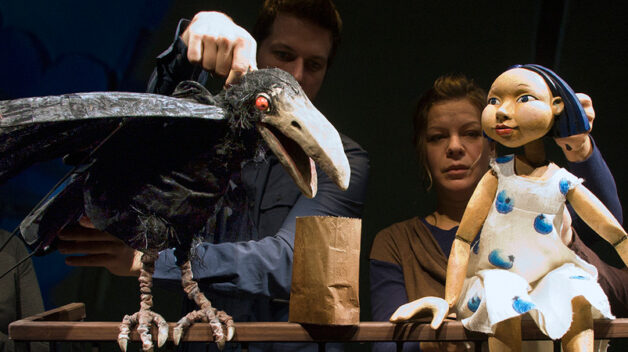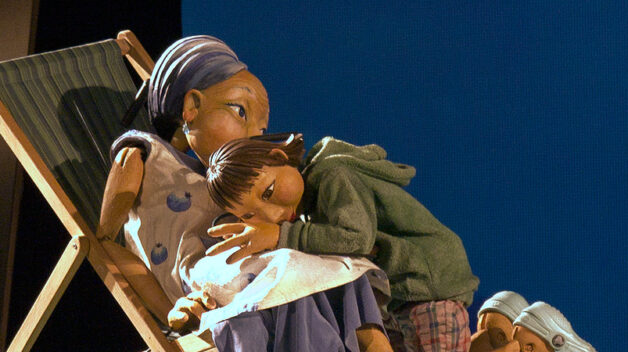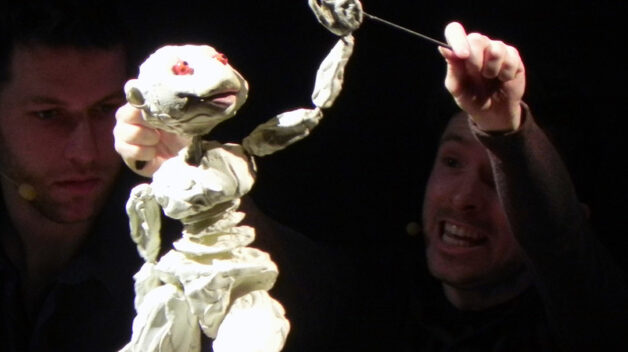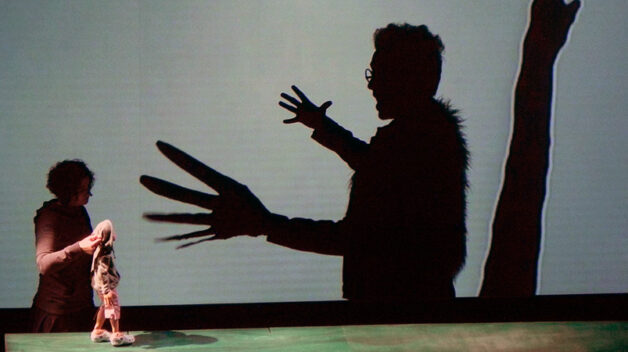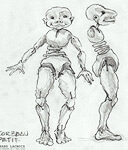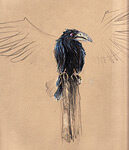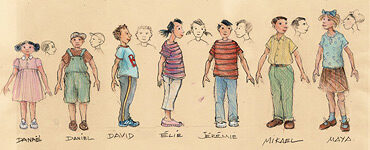- Summary
- Trailer
- Photos
- Characters
- Credits
- Presenter’s Corner
Raven
Summary
When Saskia was little, she would go camping in the woods with her cousins. Her grandmother, Nukum, would tell them stories of the raven. Nukum had known the raven ever since she was a child. The bird had once stolen some of her French fries and, later, even stole some fish. In return, he told her some of his most celebrated stories. And then one summer, the raven appeared in the form of someone whom Nukum had loved dearly.
Inspired by the figure of the raven, found in many First Nations legends, the play illustrates how culture is passed on and the spécial bond between grandparents and their grandchildren. It shows humans as part of the animal family and tells of their Relationship with an unseen world.
Corbeau / Raven premiered at Montréal’s Maison Théâtre in October 2012 following a creative residency at the Maison de la culture Villeray–St-Michel–Parc-Extension.
The pages of the book Corbeau, published in French at L’Instant même, present Jean-Frédéric Messier’s story and creative process, Richard Lacroix’s sketches, workshop and stage photographs, as well as the story of Théâtre de l’Œil’s first 40 years, as told by Michelle Chanonat.
Trailer
Photos
Characters
Credits
Anne Lalancette
Dominic L. Saint-Louis
Estelle Richard

